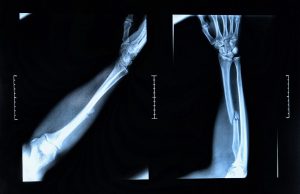
It’s true that children break arms and legs. As do active adults. But inactivity and age can be risk factors for breaks too. Even in those of you that may think you live a safe and low-risk lifestyle.
Bone strength plays a key role in fracture risk. If bones can stand up to impact, they are less likely to break. But you don’t need a high impact to break a weak bone. A bang or fall that you would have bounced up from in the past can be devastating in old age.
Why? Because most people don’t necessarily live a bone-healthy lifestyle. Aside from eating a nutrient-rich diet high in calcium, vitamin D, magnesium, vitamin K, and other nutrients, many older folks aren’t very active.
Sedentary living is bad news for bone strength. Bones need resistance to get stronger. Too much sitting takes all the pressure off your bones, which promotes lost density and leads to weaker bones that are more susceptible to breaks.
Of course, resistance training (weight training) can be great for building strong bones. Lifting weights adds the pressure your bone needs to build up strong and dense.
But you don’t need to weight train to build stronger bones.
The bones in your lower body are the ones you might want to prioritize. Legs and hips hold you up, and can also lead to far more severe outcomes than a broken arm.
To build stronger bones in your lower body, the foundation of your body, all you need to do is stand up and walk more. Any kind of upright movement where your putting pressure on your bones is helpful – walking, jogging, dancing, etc. are all options.
It’s the pressure that’s key. That’s why cycling and swimming, although great for overall health, are not particularly advantageous to bone health. They relieve the pressure/impact on bones that are required to improve bone density and strength.
A bone break is always a slip or a fall away, so do your best to be ready. Think about bone strength and other things you can do to lower the risk.